The Temple of Olympian Zeus is in central Athens, 700 meters south of the Hellenic Parliament and Syntagma Square. It was built on the banks of the Ilissos River between Acropolis and Ardittos Hills. The Temple of Olympian Zeus is unique as it was one of the largest temples with 104 pillars in ancient times. Today, only fifteen standing columns remain. It is also a remarkable temple as it took 647 years to be completed!
Let’s discover what you will see if you visit the Temple of Olympian Zeus today!
My Latest Video on Olympian Zeus
**The Temple is currently undergoing restoration work.
*Some of the links in this post are affiliate links. That means I may make a commission if you click and buy. The commission comes at no additional cost to you.
The Temple of the Olympian Zeus Through History
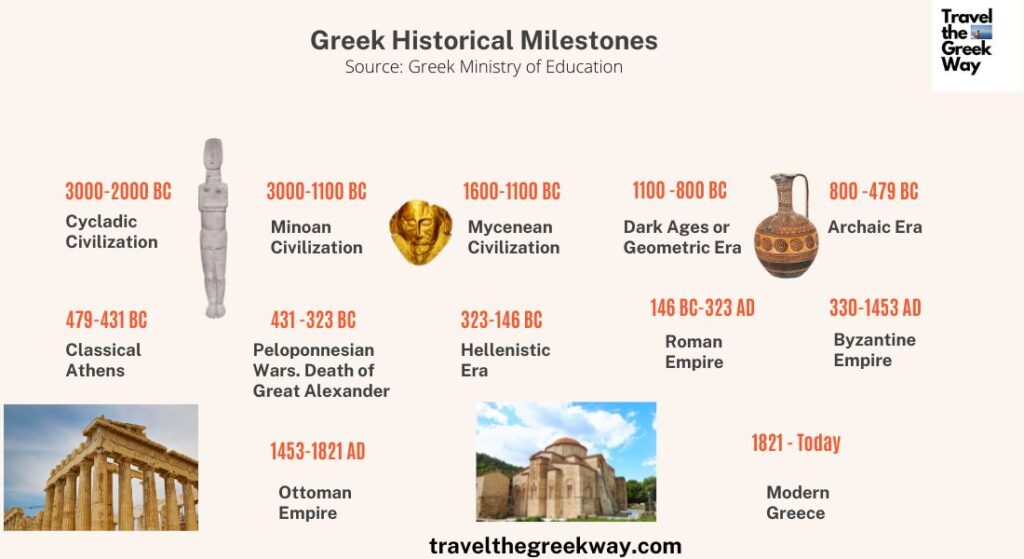
- The construction of the Temple was started by the Peisistratids, the descendants and relatives of the Athenian tyrant Peisistratus circa 515 BCE. The project was to build a gigantic Doric temple, unlike any other temple in ancient Greece. However, the project was abandoned only 5 years later, right after the resolution of the tyranny.
- Between 510 and 480 BCE parts of the temple were used to construct the Themistoclean Wall. The Wall was a fortification that connected the center of Athens with the main port of Attica, Piraeus.
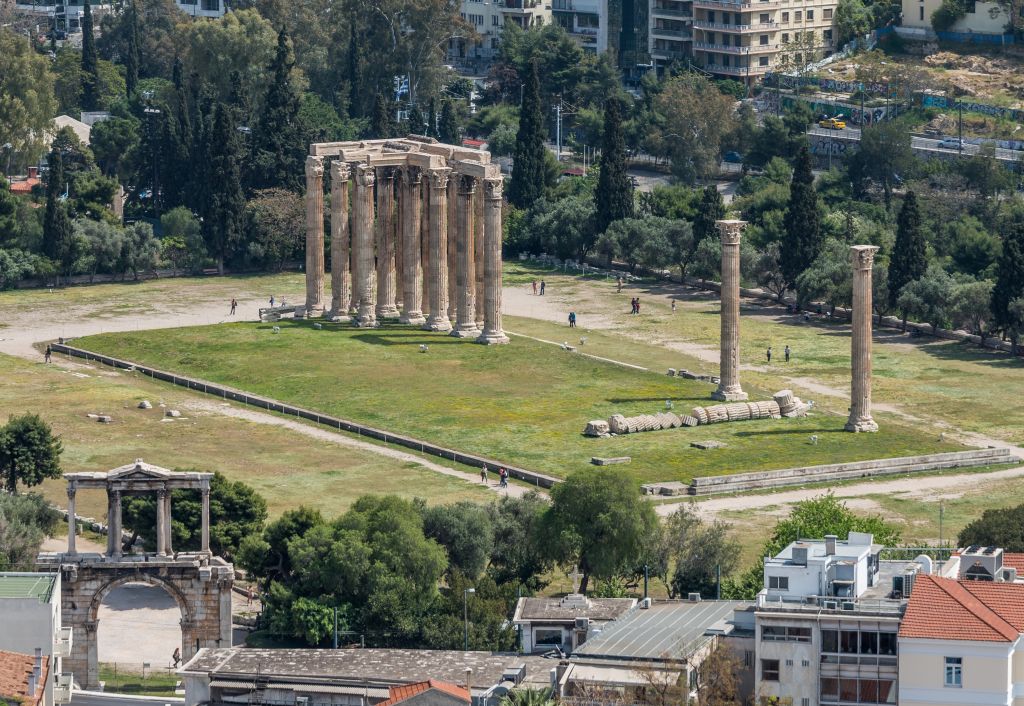
- During the Classical Era, the Athenians attempted to complete the temple. However, likely due to the onset of the Peloponnesian Wars, the project was once again abandoned.
- Between 175 and 164 BCE, King Antiochus IV Epiphanes of Syria hired the Roman architect Cossutius to continue the Temple of Olympian Zeus. Cossutius significantly altered the original plan, replacing the austere Doric order with a more elaborate Corinthian one, and using expensive Pentelic marble for the temple. However, the king’s death disrupted all plans, and the construction was again halted.
- In 86 BCE, the Roman commander Cornelius Sulla took one of the temple columns as a trophy to Rome, intending to decorate the palace on Palatine Hill.
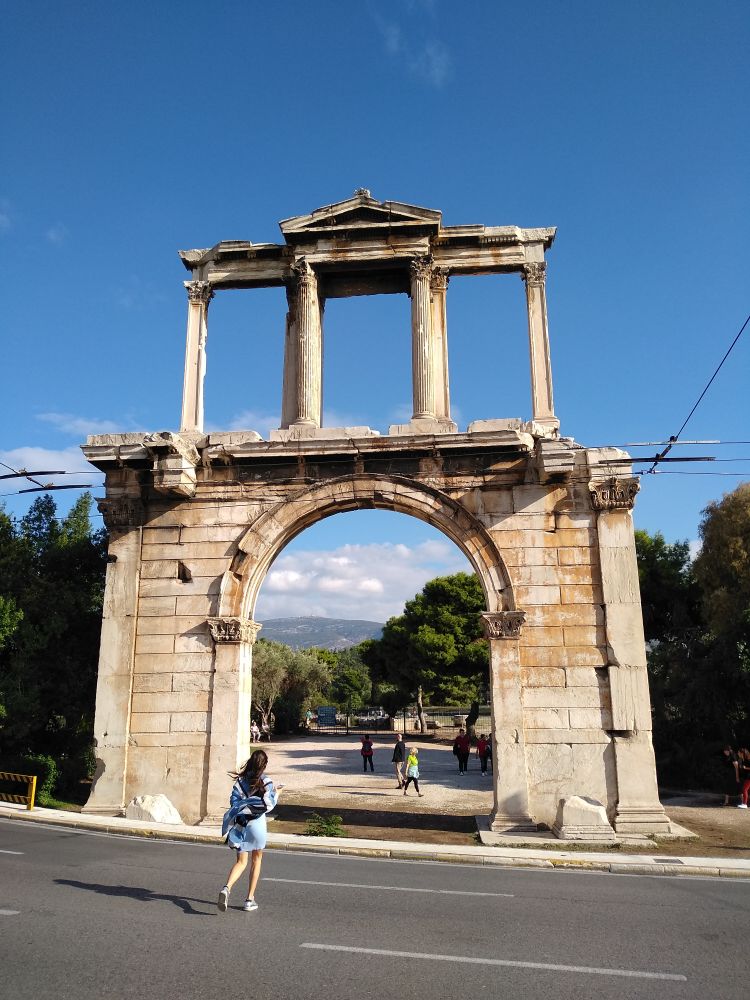
- Emperor Hadrian finally inaugurated the temple in 132 CE. The completion of the temple was perhaps one of philhellene Hadrian’s most significant projects in Greece.
- The ruin of the magnificent temple of Olympian Zeus began in the 5th century CE. In the southeast area of the precinct, there was an open-air mosque during the Ottoman rule.
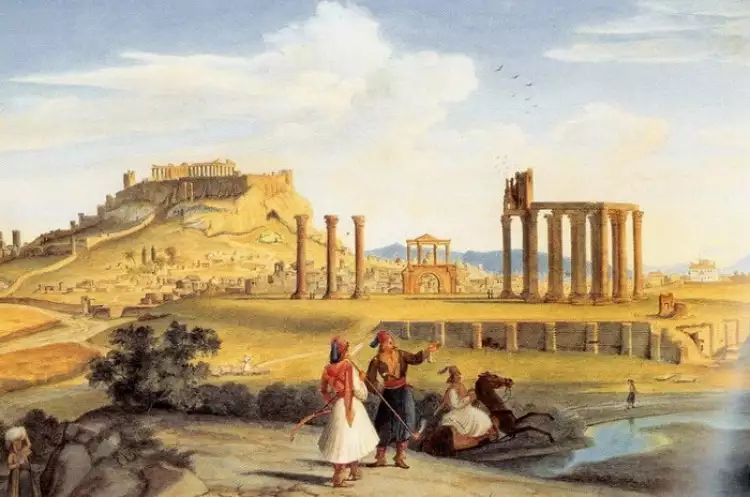
- A pillar fell during a storm in October 1852. The photo above is one of the rare paintings that shows the 3 pillars still standing. On the bottom right side is Ilissos River which still flows in Athens but only as a small stream.
- The temple was first excavated in 1889-1896 by the archaeologist F. Penrose of the British School at Athens, in 1922 by the German archaeologist G. Welter, and in the 1960s by Greek archaeologists led by Ioannis Travlos.
Sanctuary of Olympian Zeus Monuments Today
The archaeological site of the Sanctuary of Olympian Zeus in Athens primarily consists of the temple itself and a few remnants of other structures.
The Temple of Olympian Zeus (Olympeion)
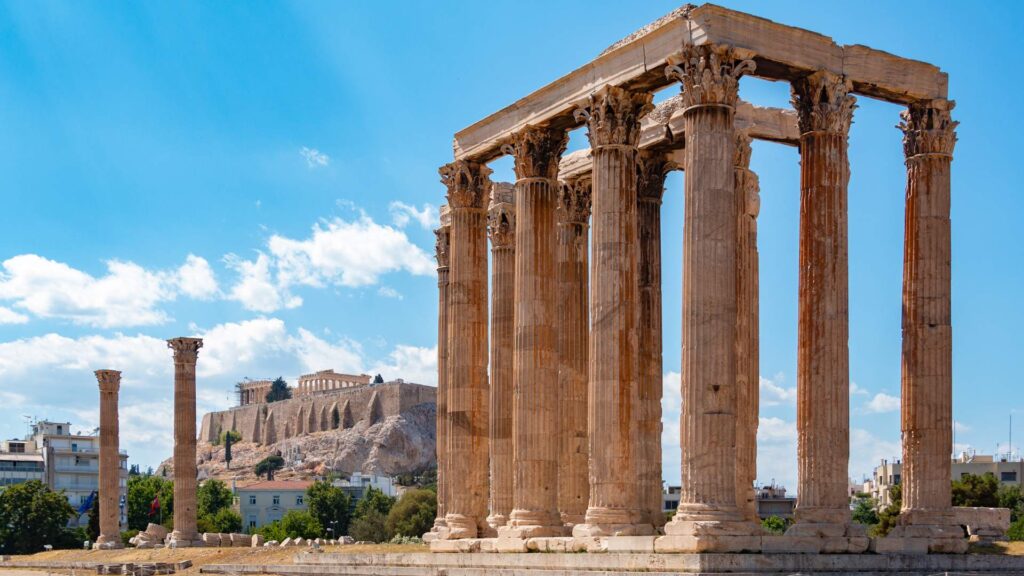
The centerpiece of the archaeological site is, of course, the Temple of Olympian Zeus, also known as the Olympeion. It was dedicated to Zeus, the king of the Olympian gods, and was restored between 124 and 132 CE.
The Temple used to have a length of 110.35 meters, a width of 43.68 meters, two rows of 20 columns on the long sides, and three rows of 8 columns on the short sides, 104 columns in total. It is estimated that only for the columns (height 16.85 meters, maximum diameter 1.94 meters), 15,500 tons of marble were used, a quantity four times greater than what was needed for the columns of the Parthenon.
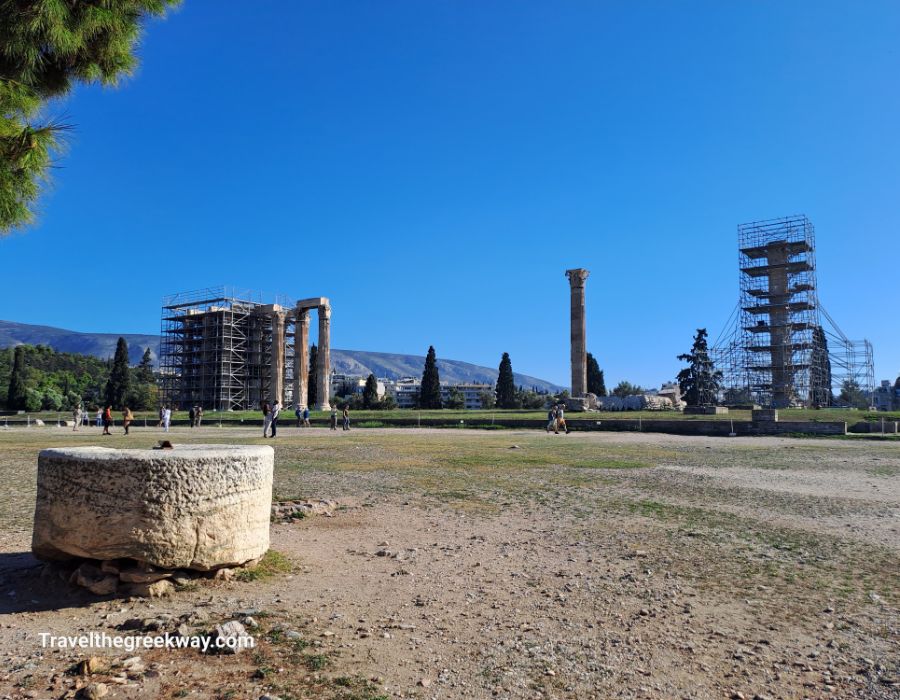
Inside, there was a gold and ivory statue of Zeus, a replica of Phidias’ work in Ancient Olympia—one of the wonders of the world. Additionally, statues of Hadrian and his beloved Antinous were placed in the sanctuary. You can walk around the Temple except for the areas that are now closed due to the restoration work.
Hadrian’s Gate
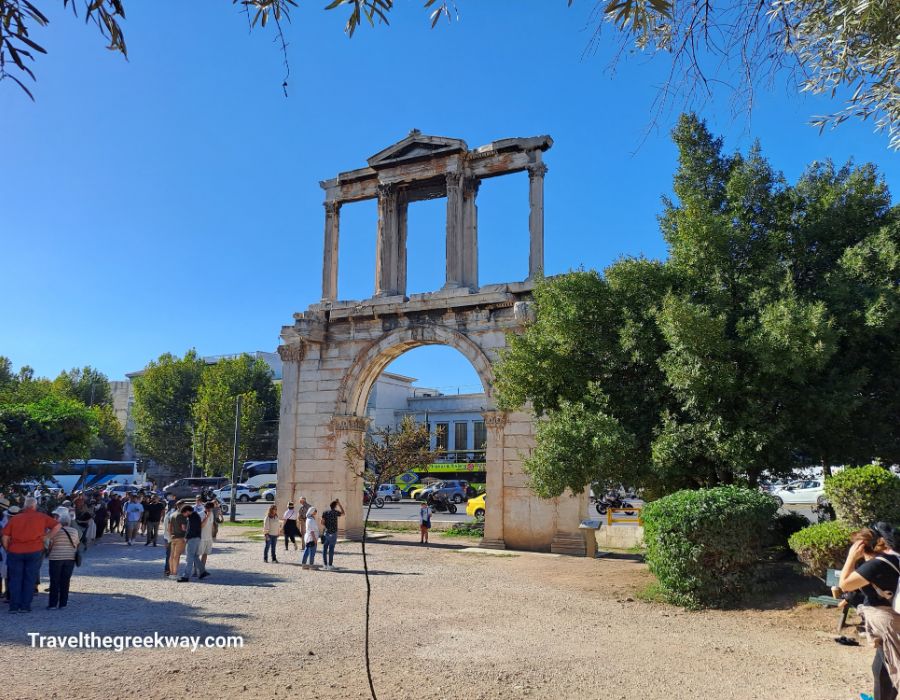
A magnificent triumphal arch, known as the Gate of Hadrian, was built around 131 or 132 CE by the Athenians as a gesture of gratitude to the benefactor emperor. The Gate is made from Pentelic marble, with a height of 18 meters and a width of 13.40 meters and identical facades.
Above the arch, two inscriptions are engraved, making the gate a landmark between the old Athens of Theseus and the new city of Hadrian:
On the western side facing Acropolis: “Αἵδ’ εἰσ’ Ἀθῆναι, Θησέως ἡ πρὶν πόλις.” (This is the old Athens, city of Theseus). On the eastern side, facing the Olympieion: “Αἵδ’ εἰσ’ Ἁδριανοῦ καὶ οὐχὶ Θησέως πόλις” (This is the city of Hadrian, not of Theseus).
The Emperor probably passed through it to inaugurate the Temple of Olympian Zeus.
Other Structures and Remnants
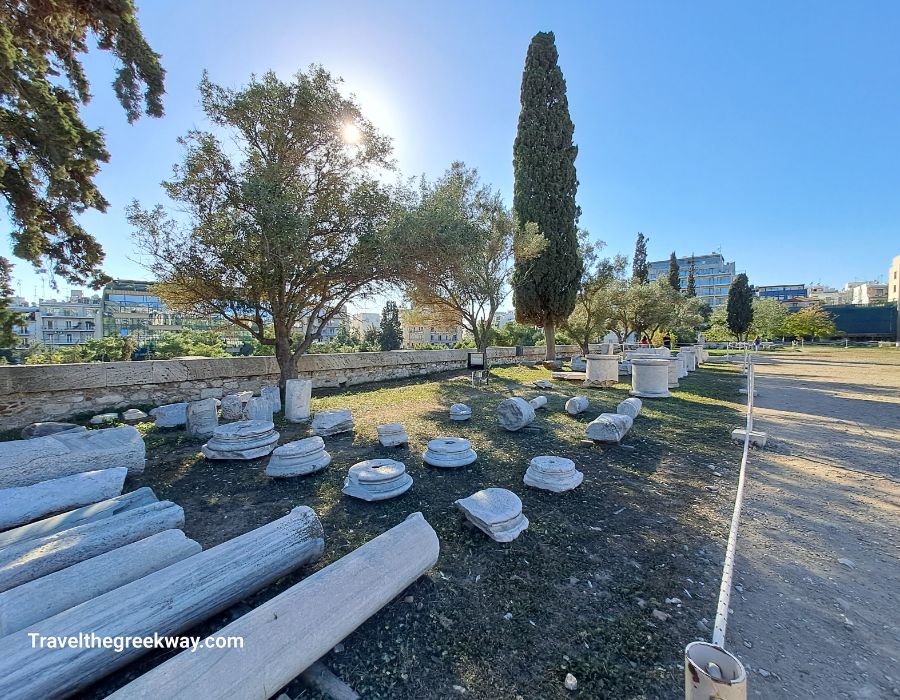
Around the Temple of Olympian Zeus, there are ruins of various important constructions that you can visit:
- To the east of the temple of Zeus, there is a mid-5th century BCE Doric peripteral temple, likely dedicated to Apollo Delphinios (450 BCE).
- The ruins of the Themistoclean Walls, the fortification that enclosed Ancient Athens. An important section of this wall crosses the present-day archaeological site of Kerameikos, over a length of approximately 200 meters, which also constitutes the best-preserved section today.
- Southeast of the temple, there is another Doric peripteral temple built on a high podium, possibly dedicated to Cronus and Rhea (150 CE).
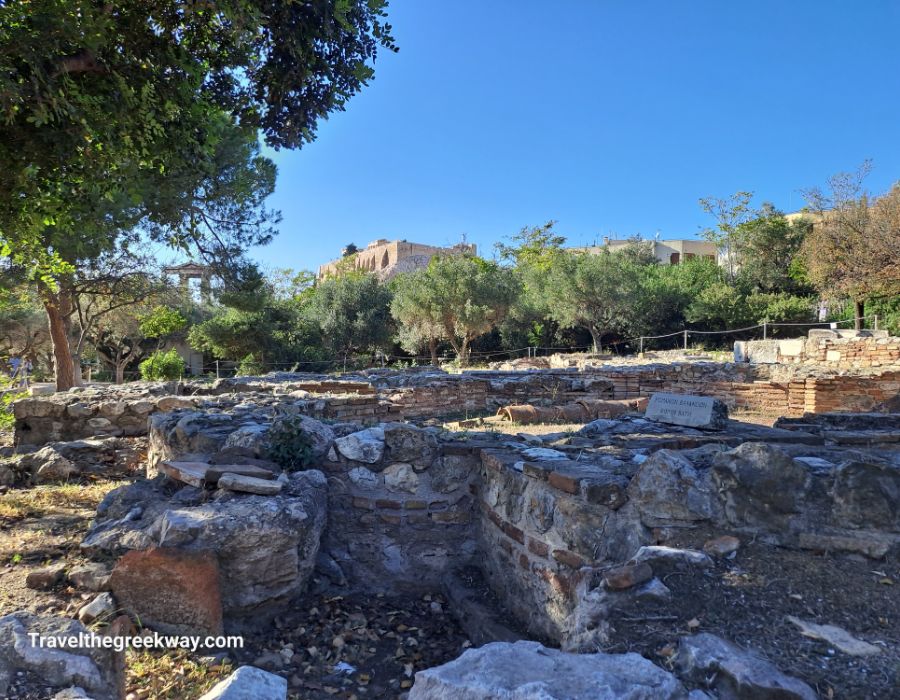
- Remnants of a large rectangular colonnaded enclosure of a Corinthian temple, possibly of Hera and Panhellenic Zeus, have been identified by Ioannis Travlos as the seat of the assemblies of the Panhellenic institution of Adrianian times. This institution aimed to unite Greek cities into a federal body, highlighting the cosmopolitan character of Athens.
- Remains of Roman Baths built by Hadrian (124-131 CE) and remains of houses (5th BCE – 2nd century CE).
Looking for an exceptional place to stay in central Athens? Check out Niche Hotel!
FAQ for the Temple of Olympian Zeus
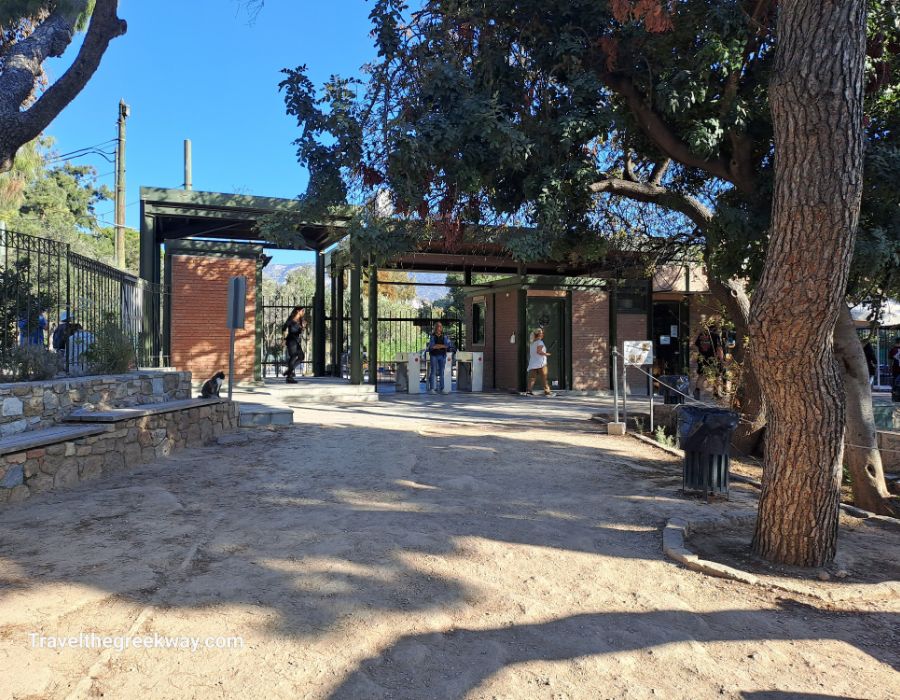
Tickets
If you are visiting Athens for the first time, then you should buy the Athens ‘package’ ticket that gives you access to 7 major sites for the current price of €30 which is valid for 5 days. The sites that you can visit are:
- Acropolis Hill and Slopes
- Ancient Agora of Athens and its Museum
- Roman Agora
- Kerameikos, Athens’ Ancient Cemetery
- Hadrian’s Library
- The Lyceum of Aristotle and
- Olympieio (Temple of Zeus)
If you only want to visit the Temple then the ticket is €8 per person for the time between April and October and €4 between November and March.
Time of Operation
The archaeological site is open from April 1st to August 31st: 08:00 – 20:00. After August the time of operation is:
- September 1st to September 15th: 08:00 – 19:30
- September 16th to September 30th: 08:00 – 19:00
- October 1st to October 15th: 08:00 – 18:30
- October 16th to October 31st: 08:00 – 18:00
Is the Temple Accessible?
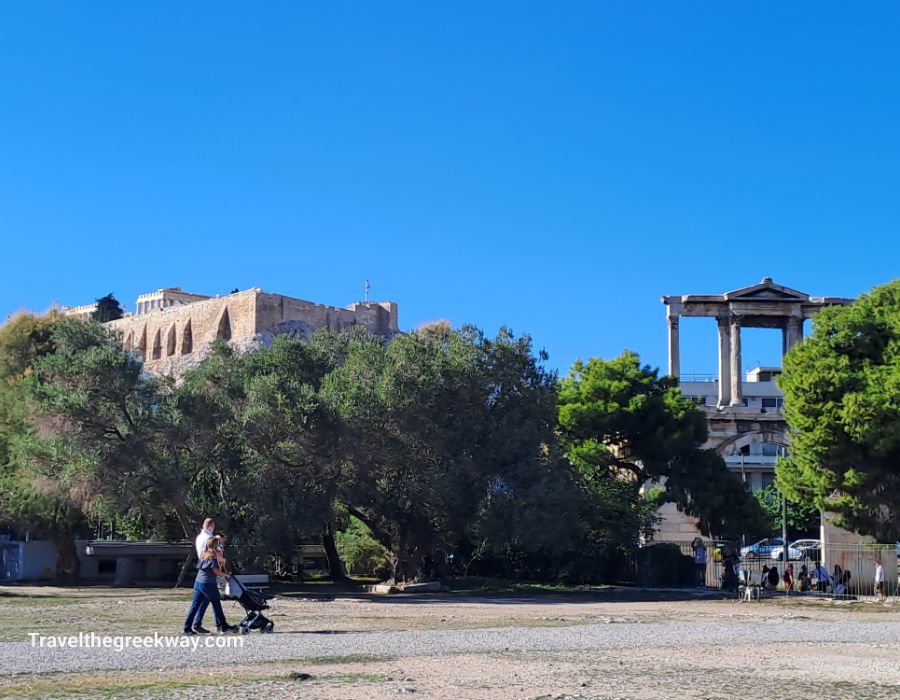
The archaeological site of the Olympieion is accessible to a large extent for visitors with disabilities, particularly those using wheelchairs, with the assistance of a companion.
Is there a Shop inside the Site?
Yes, there is a small museum shop that offers a diverse selection of publications associated with the visited location, authentic replicas of artifacts from Greek museums, and a collection of souvenirs including fridge magnets, mirrors, notepads, and more.
How Much Time Do I Need for the Site?
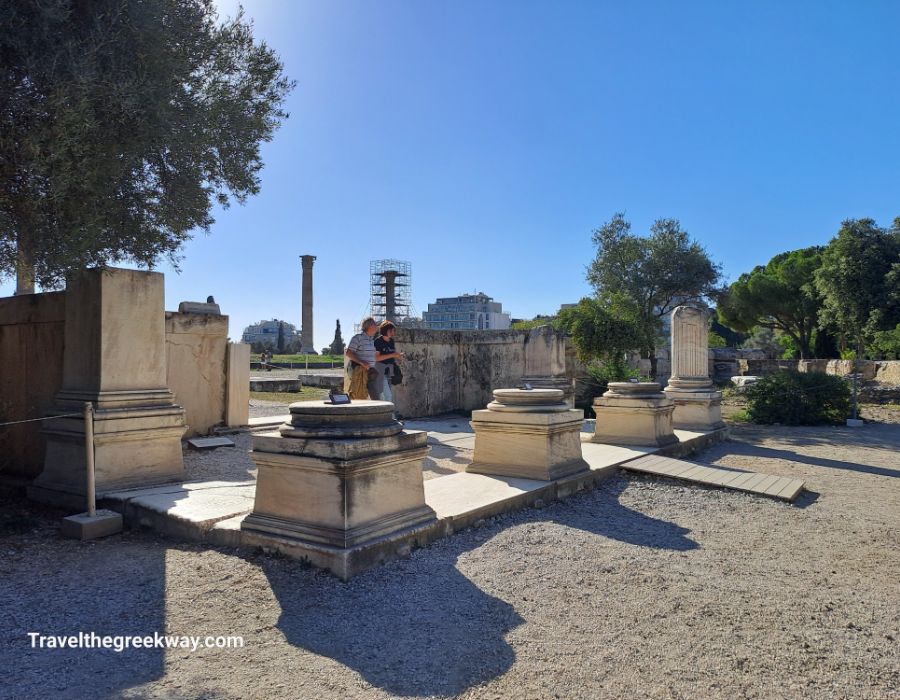
Generally speaking, you should plan to spend at least half an hour at the site.
Can I Drink or Eat inside the Temple?
You are not allowed to eat or drink inside any archaeological site in Greece, only water is allowed to carry around. However, there is a small café inside the site.
Do I Need Cash or do they Accept Credit Cards?
You can pay either with cash or with a credit card at the entrance.
How to Get to the Temple of Olympian Zeus
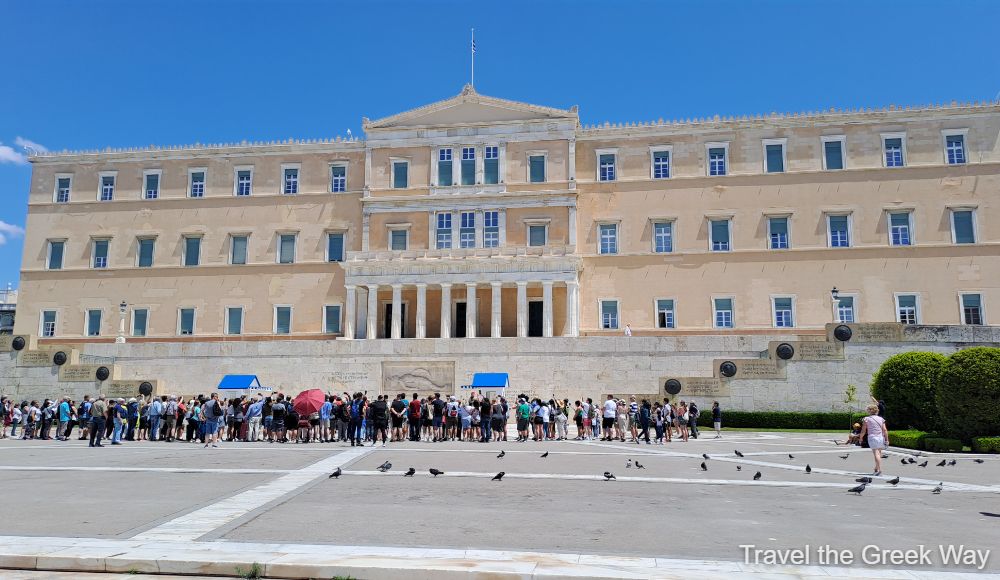
To get to the Temple of Olympian Zeus in Athens, you have several options depending on your starting point.
From the Acropolis Area:
The Temple of Olympian Zeus is located southeast of the Acropolis. It’s a pleasant walk that takes about 10 minutes through the pedestrian street of Dionysiou Areopagitou.
From Syntagma Square:
If you’re near Syntagma Square, you can take a leisurely walk to the temple of about 10 minutes.
Tip: After visiting the Temple cross the main road towards the Zappeion Park and go to the marble Panathenaic Stadium where the first Olympic Games were held.
Which is Bigger the Parthenon or the Temple of Zeus?
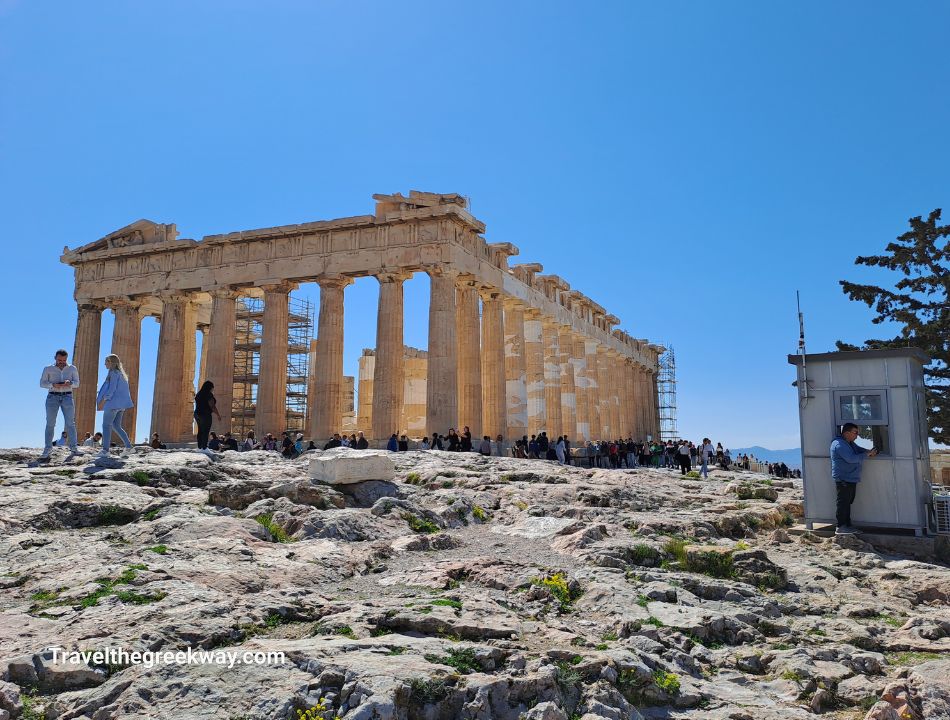
The Parthenon Temple is 69,61 meters long, 30,8 meters wide, and 13,72 meters high.
The Temple of Olympian Zeus is 110,35 long, 43,68 meters wide, and 16,85 meters high. That makes it a much bigger temple than the Parthenon.
Ancient Olympia and Temple of Olympian Zeus. Are they the Same?
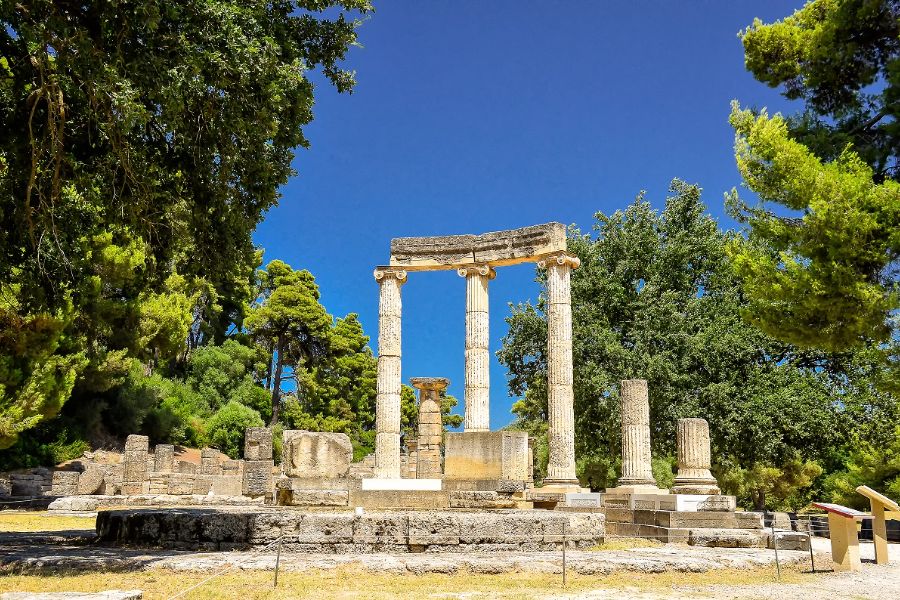
No, they are not. Ancient Olympia is located in the Peloponnese and housed the most renowned and sacred sanctuary in ancient Greece dedicated to Zeus. It was the venue for the Olympic Games, which were held as part of the Olympian festivities.
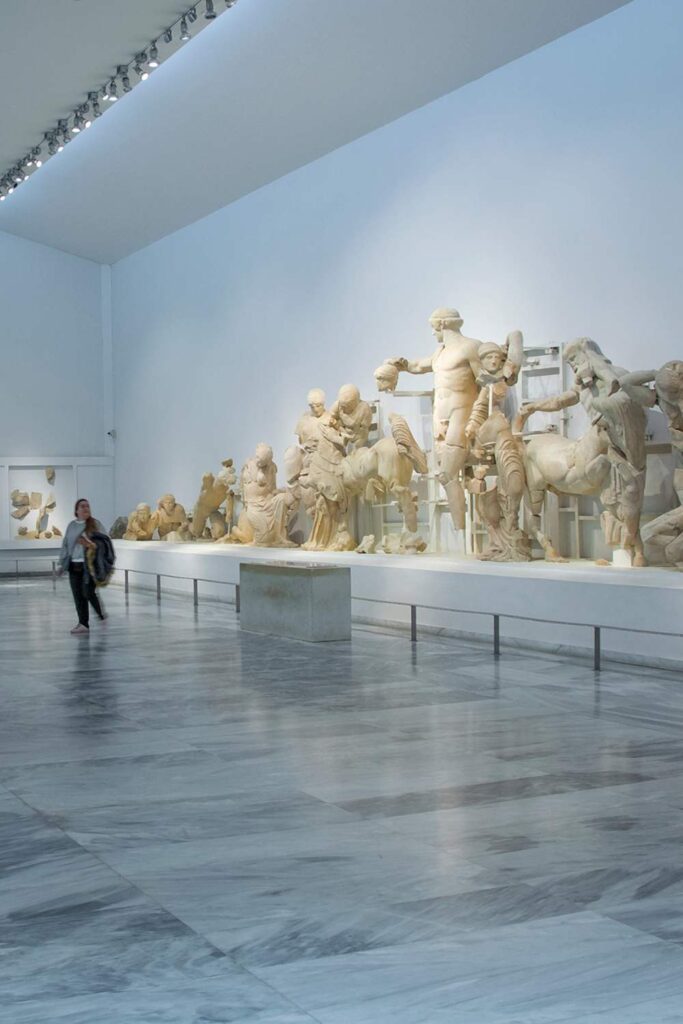
The Temple of Zeus in ancient Olympia was constructed by the local ancient Greeks in the period 470-456 BCE and serves as an exemplary model of the Doric order. The pediments were adorned with the Battle of Lapiths and Centaurs to the west and the Chariot Race of Pelops and Oinomaos to the east. The sculptures from the pediments are located in the archaeological Museum of Olympia.
The Temple of Olympian Zeus is located in Athens, with a very adventurous construction past. The Ancient Olympia and the Temple of Olympian Zeus were Sanctuaries dedicated to Zeus but the one in Ancient Olympia was the most sacred and famous not only in Ancient Greece but everywhere in the ancient world near Greece.
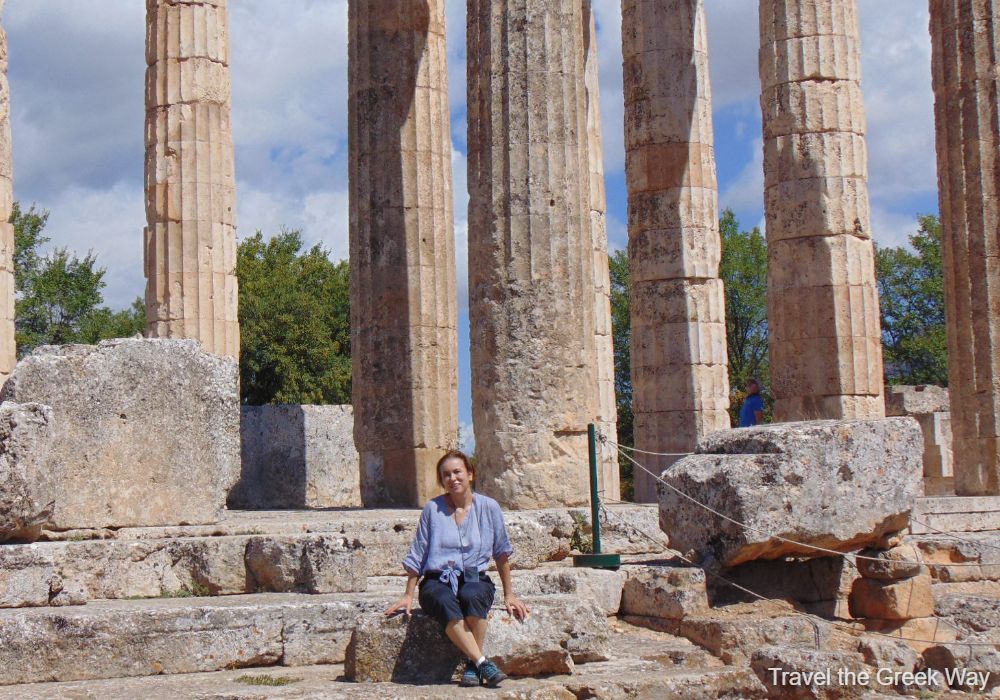
Note: Other temples dedicated to the king of ancient Greek gods are the Sanctuary of Zeus in Nemea and the unfinished temple of Zeus in Livadia.
What were Emperor Hadrian’s Projects in Greece?
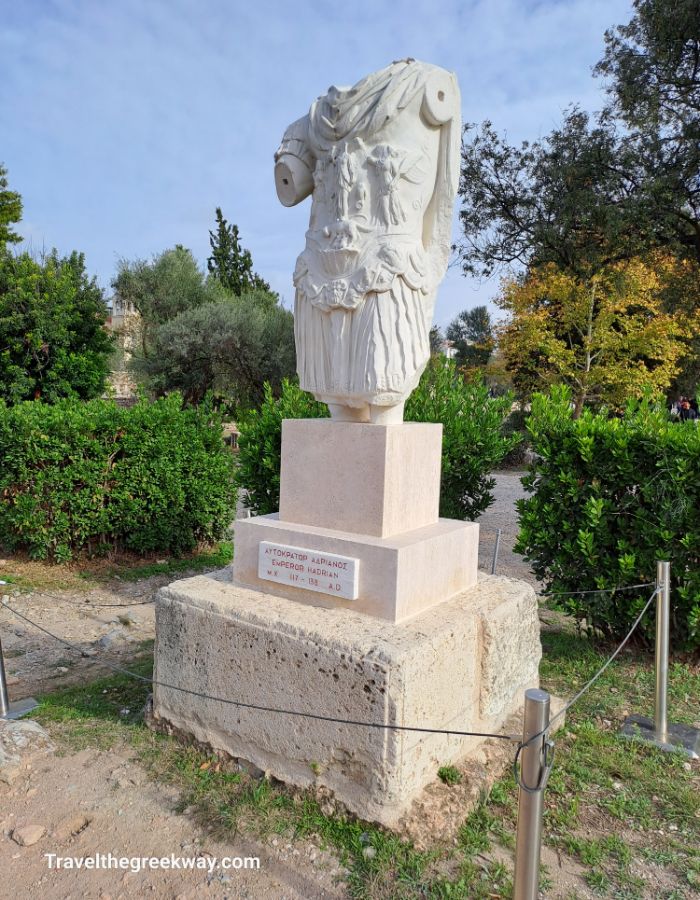
- The Library of Hadrian in Athens. In the heart of Athens, between the Agora and the Acropolis, Hadrian constructed the famous complex of the Library on a 10,000 square meter area. Apart from the three-story library, it included reading rooms, teaching spaces, colonnades for philosophical walks, gardens, and an artificial pond for recreation. The emperor aimed to create a university space worthy of the reputation of ancient Athens in literature and sciences.
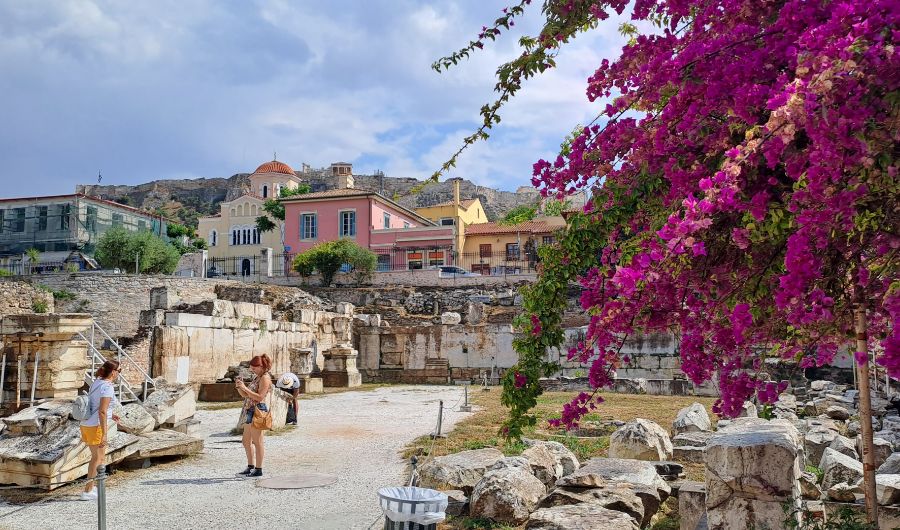
- A very significant building of Hadrian in Athens was the Pantheon where records of all sacred buildings, offerings, and the emperor’s donations to the cities of the Greeks and the Barbarians were inscribed. The Pantheon is identified with the impressive ruins of a temple on Adrianou Street in Plaka.
- Hadrian addressed the issue of supplying water to the new Athens by constructing an aqueduct 18 kilometers in length, which conveyed abundant water from the sources of Mount Parnitha to Lycabettus Hill.
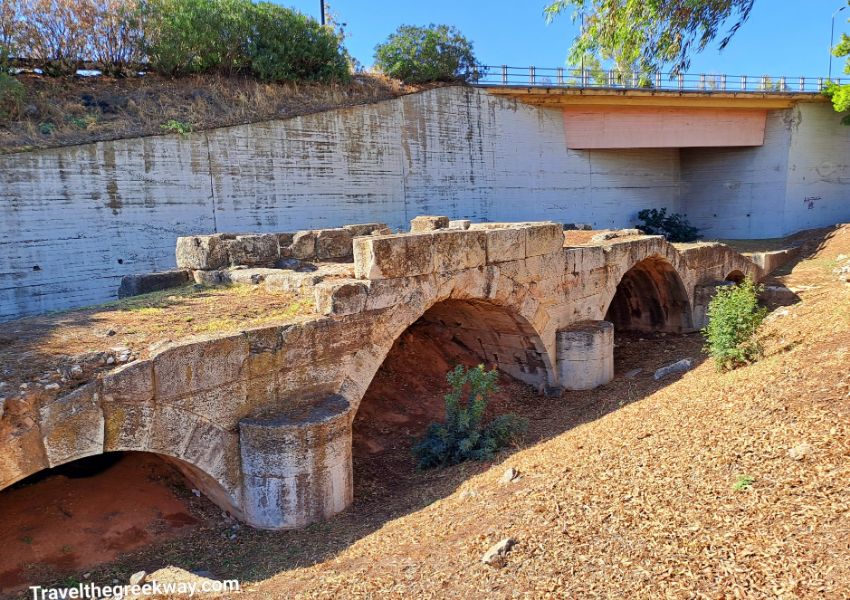
One kilometer east of the entrance to the Sanctuary of Demeter in Eleusis, there still stands an impressively well-preserved limestone bridge built by Hadrian.
Best Hotel with Temple of Olympian Zeus View
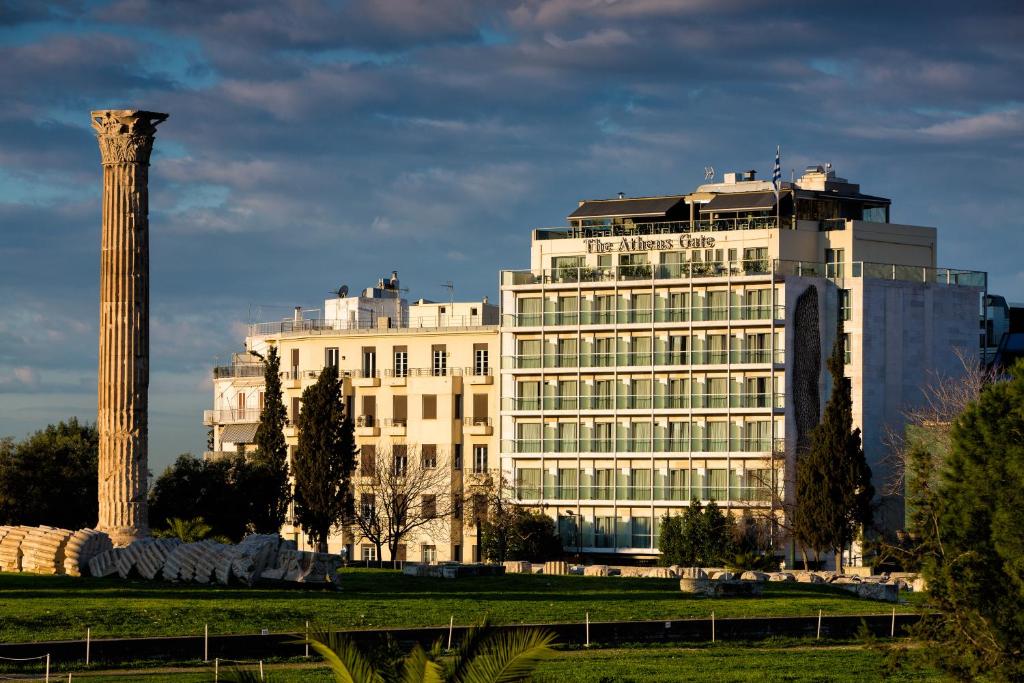
The Athens Gate Hotel will spoil you with its stunning location, facing the Acropolis and the archaeological site of the Olympian Zeus. This is one of the best 4-star central Athens hotels.
What are the Best Guided Tours for Ancient Athens?
For a great introduction to Athens, I suggest you book a guided tour to explore the city’s most significant monuments. Discover three of the best tours below – with a badge of excellence – for Athens.
- Athens Half Day Tour, Acropolis, Parthenon, Temple of Olympian Zeus & Hephaistus
- Athens Highlights: a Mythological Tour
- Athens Full Day Private Tour
Conclusion
The Temple of Olympian Zeus stands as more than just a collection of ancient ruins; it symbolizes human ambition, cultural expression, and the enduring legacy of ancient Greece. From its inception in the 6th century BCE to its completion under Roman rule, the temple reflects the ever-changing dynamics of the ancient world.
My Most Popular Posts
- Greece Packing List – What to pack for a 10-day trip to Greece
- First Time to Greece – Most Important FAQ
- Athens Hotels Near Acropolis
- Athens Apartments Near Acropolis
- Best Athens Beach Hotels
Essential Travel Info for Greece
- ‘Hello’ and ‘Thank You’ in Greek: “Ya sou” and “Efharisto”
- Booking.com: I use Booking.com mostly for Europe. It has over 1 Million properties to choose from, including everything from hotels to apartments and even hostels. And free cancellation!
- Expedia: I use Expedia for the best hotel descriptions and amenities and a rewards points system for the rest of the world.
- All-Inclusive Resorts in Greece
- FerryScanner to book ferries to the Greek Islands
- Rent an Affordable Car in Greece
- Athens Metro Website (timetables and ticket info)
- Map of Athens Metro
- Trains (Hellenic Train)
- Public Buses KTEL
- Get Your Guide: For all your day or multi-day tours and city guide needs, I use Get Your Guide
- Emergency Numbers Anywhere in Greece: AMBULANCE 166 – FIRE 199 – POLICE 100– EMERGENCY NUMBER 112
